List of GOES satellites
This is a list of Geostationary Operational Environmental Satellites. GOES spacecraft are operated by the United States National Oceanic and Atmospheric Administration, with NASA responsible for research and development, and later procurement of spacecraft.
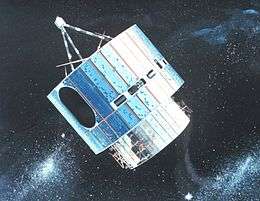
History
The first three GOES satellites used a Philco-Ford bus developed for NASA's Synchronous Meteorological Satellites, which preceded GOES.[1] Two SMS satellites had been launched; SMS-1 in May 1974, and SMS-2 in February 1975. The first GOES satellite, GOES-1, was launched in October 1975. Two more followed, launching almost two minutes short of a year apart, on 16 June 1977 and 1978 respectively. The SMS-derived satellites were spin-stabilized spacecraft, which provided imagery through a Visible and Infrared Spin Scan Radiometer, or VISSR.
Following the three SMS GOES spacecraft, five satellites were procured from Hughes, which became the first generation GOES satellites. Four of these reached orbit, with GOES-G being lost in a launch failure.[2]
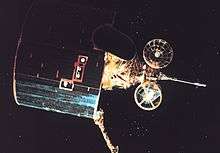
The next five GOES satellites were constructed by Space Systems/Loral, under contract to NASA.[3] The imager and sounder instruments were produced by ITT Aerospace/Communication Division. GOES-8 and -9 were designed to operate for three years, while -10, -11 and -12 have expected lifespans of five years. GOES-11 and -12 were launched carrying enough fuel for ten years of operation, in the event that they survived beyond their expected lifespan.
A contract to develop four third-generation GOES satellites was awarded to Hughes Corporation, with the satellites scheduled for launch on Delta III rockets between 2002 and 2010.[4] After a merger with Hughes, Boeing took over the development contracts, with launches transferred to the Delta IV, following the Delta III's retirement. The contract for the fourth satellite, GOES-Q, was later cancelled,[5] and that satellite will only be completed in the event that another third-generation satellite is lost in a launch failure or fails soon after launch. The first third-generation satellite, GOES-13, was launched in May 2006, originally serving as an on-orbit backup.[6] However, in April 2010, GOES-12 was moved to South America coverage and GOES-13 was moved to the GOES-East role.[7] Third generation satellites have an expected lifespan of seven years, but will carry excess fuel to allow them to operate for longer if possible, as with the last two-second generation satellites.
| Name | Longitude | Satellite |
|---|---|---|
| GOES-East | 75° W | GOES-16[8] |
| GOES-West | 137° W | GOES-17[9] |
| GOES-South | 60° W | Vacant |
The fourth-generation satellites, the GOES-R series,[10] are being built by Lockheed Martin using the A2100 satellite bus. The GOES-R series is a four-satellite program (GOES-R, -S, -T and -U) that will extend the availability of the operational GOES satellite system through 2036.[11] The first satellite of the series, the eponymous GOES-R, was launched on 19 November 2016.[10] It was renamed GOES-16 upon reaching orbit. The second satellite of the series, the eponymous GOES-S, was launched on 1 March 2018. It was renamed GOES-17 upon reaching orbit.
Imagery
Satellites
| Designation | Launch Date/Time (UTC) | Rocket | Launch Site | Longitude | First Image | Status | Retirement | Remarks | |
|---|---|---|---|---|---|---|---|---|---|
| Launch | Operational | ||||||||
SMS-derived satellitesManufactured by Ford Aerospace | |||||||||
| GOES-A | GOES-1 | 16 October 1975, 22:40 | Delta 2914 | CCAFS LC-17A | 25 October 1975 | Retired | 7 March 1985[12] | ||
| GOES-B | GOES-2 | 15 June 1977, 10:51 | Delta 2914 | CCAFS LC-17B | 60° W | Retired | 1993[13] | Reactivated as comsat in 1995,[13] finally deactivated in May 2001 | |
| GOES-C | GOES-3 | 16 June 1978, 10:49 | Delta 2914 | CCAFS LC-17B | Retired | 1993[14] | Reactivated as comsat in 1995,[14] decommissioned 29 June 2016 | ||
First generationBuilt on a Hughes Space and Communications HS-371 spacecraft bus | |||||||||
| GOES-D | GOES-4 | 9 September 1980, 22:57 | Delta 3914 | CCAFS LC-17A | 135° W | Retired | 22 November 1988[15] | ||
| GOES-E | GOES-5 | 22 May 1981, 22:29 | Delta 3914 | CCAFS LC-17A | 75° W | Retired | 18 July 1990[16] | ||
| GOES-F | GOES-6 | 28 April 1983, 22:26 | Delta 3914 | CCAFS LC-17A | 136° W[17] | Retired | 21 January 1989[17] | ||
| GOES-G | N/A | 3 May 1986, 22:18 | Delta 3914 | CCAFS LC-17A | 135° W (planned) | N/A | Failed | +71 seconds | Launch failure[18] |
| GOES-H | GOES-7 | 26 February 1987, 23:05 | Delta 3914 | CCAFS LC-17A | 75° W, 98° W, 112° W, 135° W, 95° W, 175° W | Retired | January 1996[19] | Reactivated as comsat for Peacesat from 1999-2012, moved to graveyard orbit 12 April 2012.[20] | |
Second generationBuilt on a Space Systems/Loral LS-1300 spacecraft bus | |||||||||
| GOES-I | GOES-8 | 13 April 1994, 06:04 | Atlas I | CCAFS LC-36B | 75° W | 9 May 1994 | Retired | 4 May 2004[21] | In graveyard orbit |
| GOES-J | GOES-9 | 23 May 1995, 05:52 | Atlas I | CCAFS LC-36B | 135° W, 155° E | 19 June 1995 | Retired | 14 June 2007[22] | In graveyard orbit |
| GOES-K | GOES-10 | 25 April 1997, 05:49 | Atlas I | CCAFS LC-36B | 135° W, 65° W | 13 May 1997 | Retired | 1 December 2009[23] | In graveyard orbit |
| GOES-L | GOES-11 | 3 May 2000, 07:07 | Atlas IIA | CCAFS SLC-36A | 135° W | 17 May 2000 | Retired | 16 December 2011[24] | Retired, Drifting west |
| GOES-M | GOES-12 | 23 July 2001, 07:23 | Atlas IIA | CCAFS SLC-36A | 60° W | 17 August 2001 | Retired | 16 August 2013 | Operated at GOES-South covering South America, and retained as spare, following replacement at GOES-East by GOES-13. Now in a graveyard orbit. |
Third generation | |||||||||
| GOES-N | GOES-13 | 24 May 2006, 22:11 | Delta IV-M+(4,2) | CCAFS SLC-37B | 75° W, 61.5° E | 22 June 2006 | Standby | Replaced by GOES-16 at GOES-East on 18 December 2017.[25] To be operational again for the Indian Ocean in mid-2020 under the new name DOD-1. | |
| GOES-O | GOES-14 | 27 June 2009, 22:51 | Delta IV-M+(4,2) | CCAFS SLC-37B | 105° W | 27 July 2009 | Standby | On-orbit spare, was used to cover GOES-East imagery and moved into position following GOES-13 malfunction in 2012,[26] also activated to cover GOES-13 outage in mid-2013 | |
| GOES-P | GOES-15 | 4 March 2010, 23:57 | Delta IV-M+(4,2) | CCAFS SLC-37B | 89.5° W, 135° W | 7 April 2010 | Standby[27] | On-orbit spare for GOES-West | |
| GOES-Q | NA | N/A | Not built | N/A | Planned but not contracted[28] | ||||
| Scheduled launches | |||||||||
Fourth generation (GOES-R Series)Built on a Lockheed Martin A2100 spacecraft bus | |||||||||
| GOES-R | GOES-16 | 19 November 2016, 23:42[29] | Atlas V 541 | CCAFS SLC-41 | 75,2° W | 15 January 2017 | Active | Replaced GOES-13 at GOES-East on 18 December 2017.[25][30] | |
| GOES-S | GOES-17 | 1 March 2018[31] | Atlas V 541 | CCAFS SLC-41 | 137,2° W | Active | GOES-West | ||
| GOES-T | December 2021[32][33] | Atlas V 541 | CCAFS SLC-41 | ||||||
| GOES-U | 2024[32] | EELV | CCAFS | ||||||
References
- Krebs, Gunter. "SMS 1, 2 / GOES 1, 2, 3". Gunter's Space Page. Retrieved 2009-06-23.
- Krebs, Gunter. "GOES 4, 5, 6, G, 7". Gunter's Space Page. Retrieved 2009-06-23.
- Krebs, Gunter. "GOES 8, 9, 10, 11, 12". Gunter's Space Page. Retrieved 2009-06-23.
- "GOES-NO/PQ Status". NASA. 2006-06-13. Retrieved 2009-06-23.
- Krebs, Gunter. "GOES N, O, P, Q". Gunter's Space Page. Retrieved 2009-06-23.
- "GOES-NEWS". NASA. 2009-05-09. Archived from the original on 2009-07-10. Retrieved 2009-06-23.
- "GOES-13 is America's New GOES-East Satellite". NASA. 2009-04-16. Retrieved 2011-09-12.
- "GOES-16 to GOES-East Drift Plan". Satellite Liaison Blog. 2017-09-28. Retrieved 2017-09-29.
- "GOES Spacecraft Status Main Page". NOAA. Archived from the original on 2011-12-27. Retrieved 2011-12-27.
- "GOES-R Mission Overview". GOES-R Program Office. Retrieved 2014-08-29.
- "GOES Flyout Schedule". NOAA Satellite and Information Service. Retrieved 2014-08-29.
- "GOES-1". ESE 40th Anniversary. NASA. 1999-05-12. Archived from the original on 2011-07-28. Retrieved 2009-06-23.
- "GOES-2". ESE 40th Anniversary. NASA. 1999-04-22. Archived from the original on 2009-05-30. Retrieved 2009-06-23.
- "GOES-3". ESE 40th Anniversary. NASA. 1999-04-22. Archived from the original on 2019-06-26. Retrieved 2009-06-23.
- "GOES-4". ESE 40th Anniversary. NASA. 1999-04-22. Archived from the original on 2009-05-30. Retrieved 2009-06-23.
- "GOES-5". ESE 40th Anniversary. NASA. 1999-04-22. Archived from the original on 2009-05-30. Retrieved 2009-06-23.
- "GOES-6". ESE 40th Anniversary. NASA. 1999-04-22. Archived from the original on 2009-05-30. Retrieved 2009-06-23.
- "GOES-G". ESE 40th Anniversary. NASA. 1999-04-22. Archived from the original on 2011-07-28. Retrieved 2009-06-23.
- "GOES-7". ESE 40th Anniversary. NASA. 1999-04-22. Archived from the original on 2011-07-28. Retrieved 2009-06-23.
- "NOAA retires GOES-7 after 25 years as a weather and communications satellite". NOAA News. NOAA. 2012-04-12. Retrieved 2014-06-02.
- "GOES-8 STATUS". NASA. 2004-04-15. Archived from the original on 2009-06-02. Retrieved 2009-06-23.
- "GOES-9 STATUS". NASA. 2007-06-14. Archived from the original on 2011-06-29. Retrieved 2009-06-23.
- "NOAA Deactivates GOES-10 after 12 Years of Tracking Storms". NOAA. 2009-12-02. Retrieved 2009-12-03.
- "GOES-11 Status Page". NOAA. Archived from the original on 2006-09-29. Retrieved 2011-12-27.
- Clark, Stephen (20 December 2017). "NOAA's GOES-16 weather satellite declared operational". Spaceflight Now. Retrieved 27 December 2017.
- Clark, Stephen (2 October 2012). "NOAA moves spare satellite in position over Atlantic". Spaceflight Now. Retrieved 6 October 2012.
- "NOAA readies GOES-15 and GOES-14 for orbital storage". NOAA OSPO. 2020-02-19. Retrieved 2020-03-03.
- Dennis Chesters (28 April 2016). "GOES News". The Daily Planet. NASA NOAA GOES Project. Archived from the original on 10 July 2009. Retrieved 1 October 2016.
- "GOES-R". Countdown to GOES-R Launch. GOES-R Series Program Office. Retrieved 18 November 2016.
- Hille, Karl (2017-01-23). "GOES-16 Sends First Images to Earth". NASA. Retrieved 2018-01-10.
- "GOES-R Series Satellites: GOES-R (now GOES-16) and GOES-S! | NOAA National Environmental Satellite, Data, and Information Service (NESDIS)". www.nesdis.noaa.gov. Retrieved 2018-01-10.
- Ray, Justin (24 October 2016). "GOES-R weather satellite's ride to space being stacked at Cape Canaveral". Spaceflight Now.
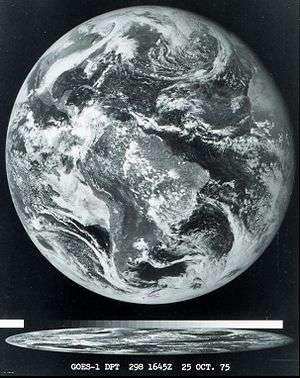
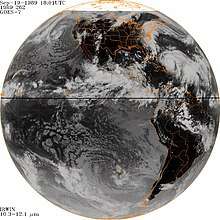
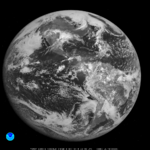


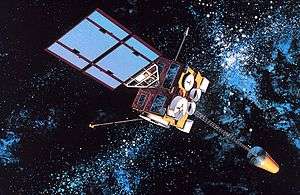
.jpg)